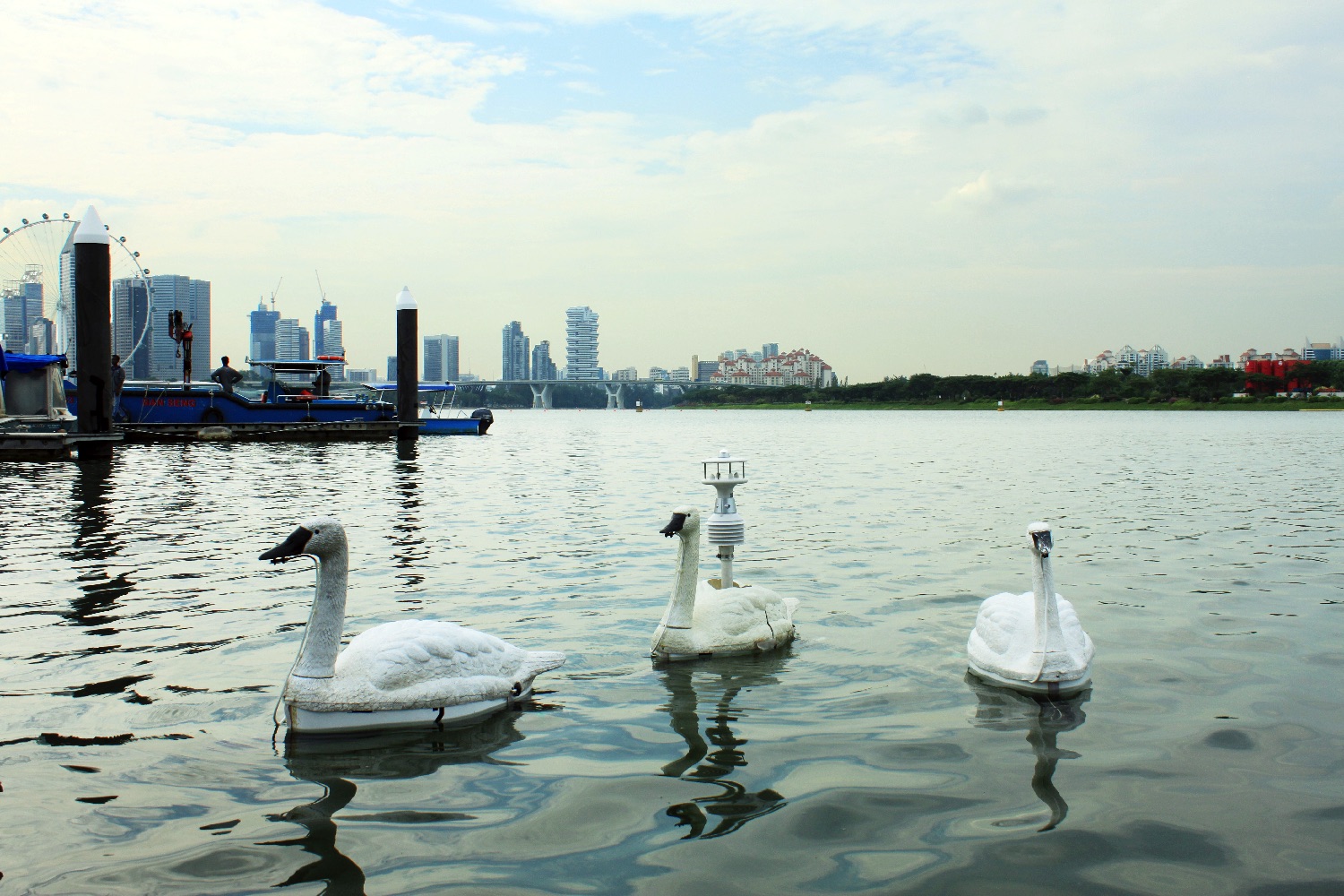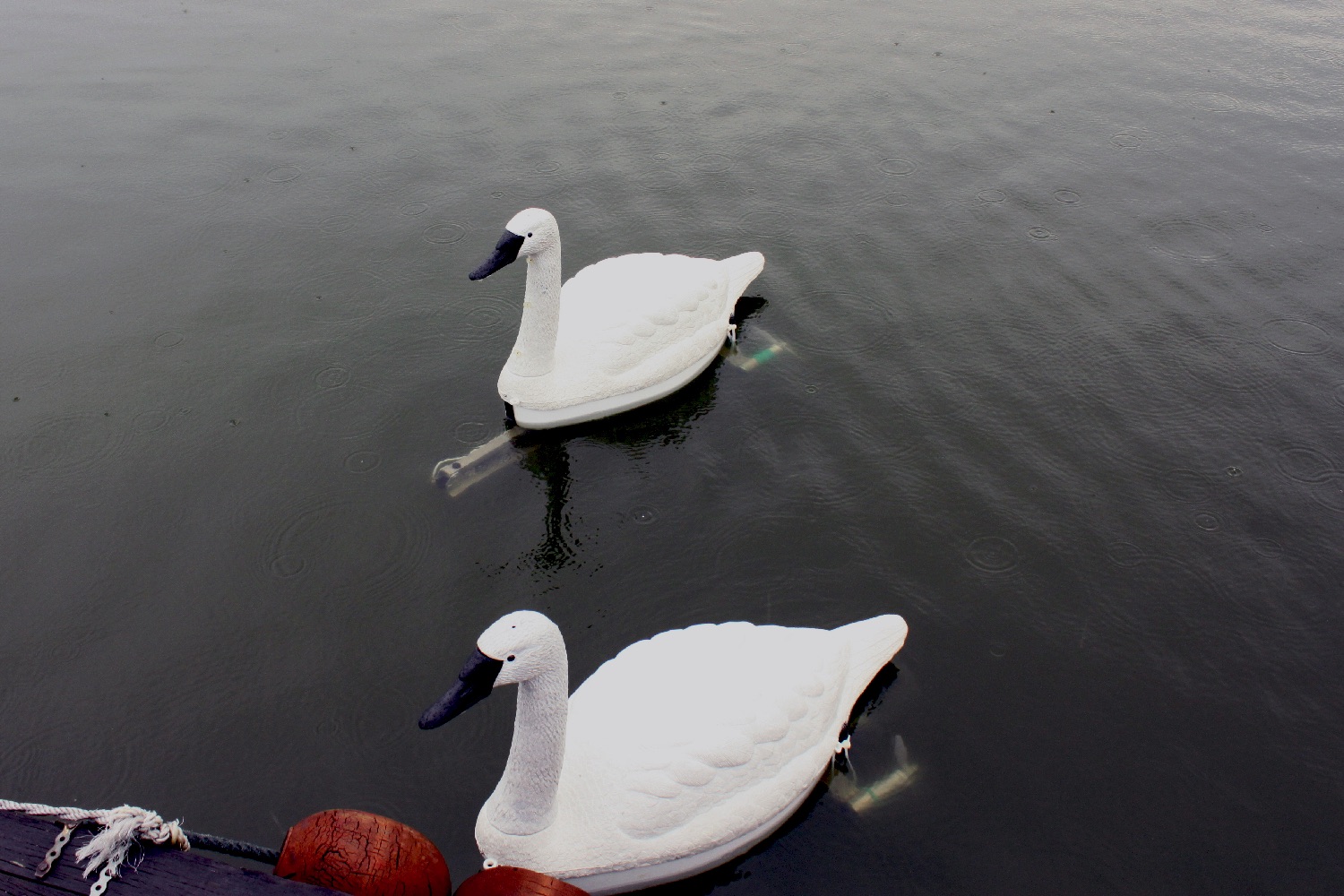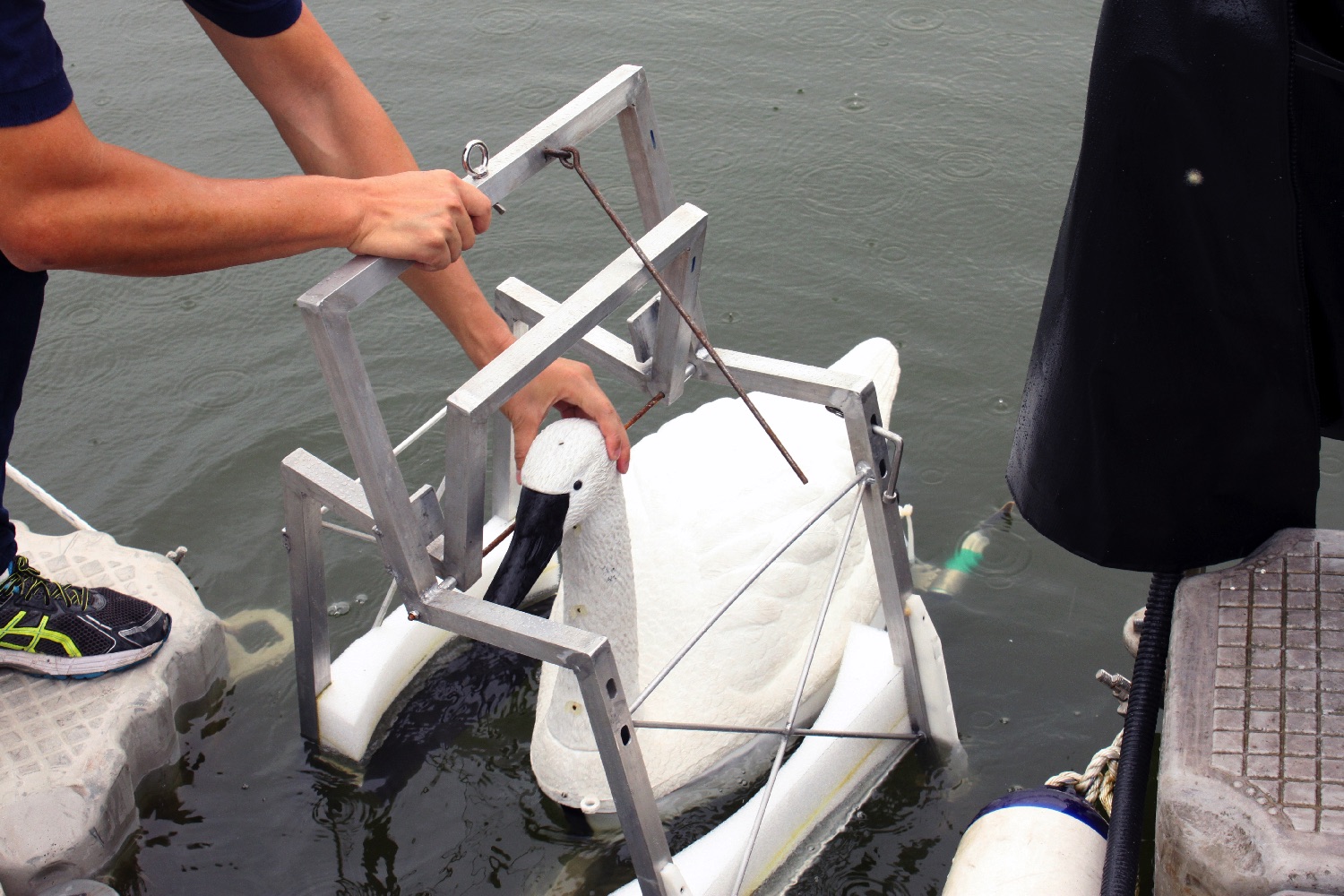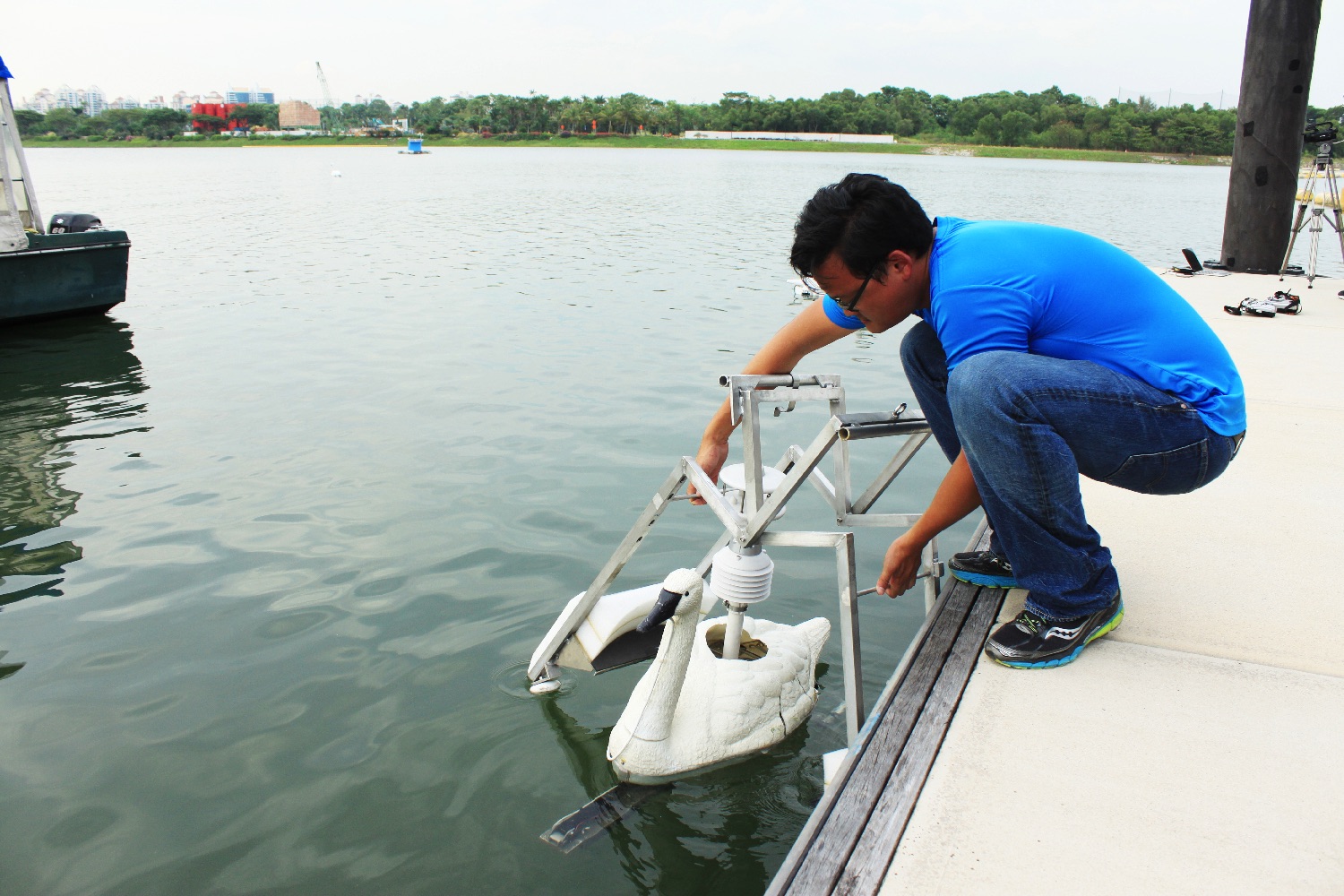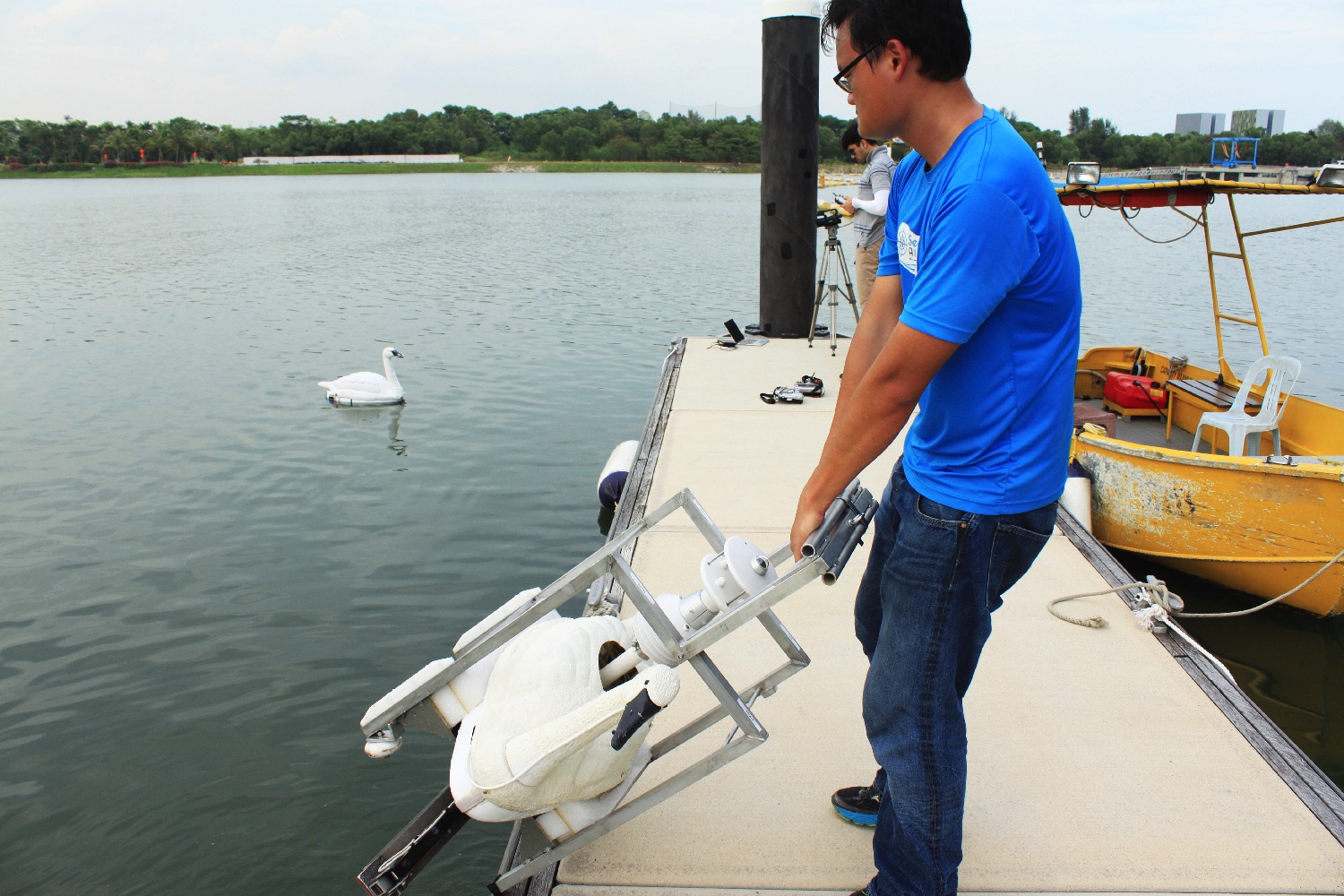“The robotic swans swim around lakes and reservoirs and measure water quality parameters,” Mandar Chitre, associate professor in the department of electrical & computer engineering at the National University of Singapore, told Digital Trends. “The data collected is available in real time over the cloud to experts from water management agencies, so that they can respond to any water quality related issues promptly. The swans can also be commanded over the cloud, so that they can be directed to monitor certain areas or bring back water samples to the shore for lab analysis.”
Water measurements which can be taken by the swans include water pH level, dissolved oxygen, turbidity, and chlorophyll. Due to the cloud connection, which analyzes the water data in real time, authorities can be alerted immediately if there is some reason why the local H2O may not be safe to drink. This is particularly useful in areas where dry weather prompts greater growth of algae, thereby making it more important to closely monitor water quality.
The remote control swans themselves feature heavy duty construction, allowing them to survive minor collisions with kayaks or other boats. Chitre said that five of the swans are currently being used to monitor water quality in lakes and reservoirs around Singapore. He said that the team has also received interest from other countries looking to replicate the system to test their own major bodies of water. They aim to be able to offer this service in the years to come.
“We hope to see a larger global adoption for the technology,” he said. “In parallel, we are working to add sensors and capabilities of the swans, and upgrade the control systems and data analytics. We also aim to have fleets of swans autonomously cooperate to adaptively monitor lakes and locate sources of pollutants.”
Editors' Recommendations
- So THAT’S why Boston Dynamics retired its Atlas robot
- Police robots put on permanent patrol at Singapore airport
- Nvidia isn’t just beating AMD in graphics, it’s still gaining ground. Here’s why
- What happened to Mars’ water? It’s more complicated than we thought
- Eufy slips twin-turbine tech into its RoboVac L80 robot vacuum
